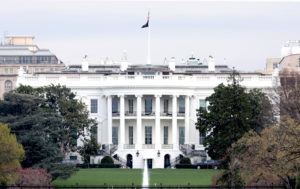
LOS GATOS, Calif. (BP) — Netflix cut a graphic suicide scene from Season 1 of “13 Reasons Why” on the streaming platform’s website, drawing praise from groups including Christians and mental health professionals.
But the Parents Television Council (PTC), among those lauding the move, continues to call on Netflix to remove the series altogether.
Netflix on Tuesday (July 16) cut much of the scene showing a lead character slitting her wrist and dying in a bathtub of bloody water. About to enter its third season, the series’ storyline expanded in Season 2 with gun violence, bullying and gang rape including male perpetrators against male classmates.
“The PTC has repeatedly urged Netflix to reevaluate leaving 13 Reasons Why on its platform until the show could be proven not to be harmful to children,” the PTC said in a press release Tuesday. “Ahead of Netflix’s most recent annual shareholders meeting, the PTC wrote to Netflix CEO Reed Hastings and each member of the Netflix Board of Directors to request that the company pull 13 Reasons Why from the platform in light of National Institutes for Health research that linked 13 Reasons Why to a 30 percent increase in suicides among children ages 10-17.”
The National Institutes for Health (NIH) funded a study that reported a 28.9 percent increase in suicides among 10- to 17-year-olds the month following series’ release in 2017, the NIH said in April.
“The results of this study should raise awareness that young people are particularly vulnerable to the media,” study author and clinical scientist Lisa Horowitz said in April. “All disciplines, including the media, need to take good care to be constructive and thoughtful about topics that intersect with public health crises.” But the NIH acknowledged the study could not definitively link the increased suicide rate to the series.
The PTC called Netflix’s edit of 13 Reasons Why a first step in what must be a continuing process of protecting children.
“Netflix has finally acknowledged the harmful impact that explicit content, such as the graphic suicide scene in 13 Reasons Why is capable of inflicting on children,” the PTC said. “While we applaud Netflix for making this responsible decision, we call on the company to redouble its efforts to protect children from harmful content.”
Rated MA for Mature Audiences, 13 Reasons Why is explicitly marketed to teens and set at a fictitious Liberty High School. The controversial series offers resources including anti-suicide information at 13reasonswhy.info, which were added to the website in advance of the show’s second season.
“If you are struggling, this series may not be right for you or you may want to watch it with a trusted adult,” Netflix warns at 13reasonswhy.info.
The American Foundation for Suicide Prevention (AFSP) also applauded Netflix for removing the suicide scene.
“The portrayal of suicidal struggles and suicide is complex and research shows people respond to entertainment content in a variety of different ways,” AFSP said in a press statement. “The same content that can lead to increased awareness and interest, and even empathy in many — can lead to worsening of mood, anxiety or self-image for others who are vulnerable or struggling….
“If the vulnerable individual sees a fictional character struggling and then dying by suicide,” AFSP said, “the vulnerable viewer can become more at risk of imitating this suicidal behavior.”
In 2017, adolescents and young adults aged 15-24 had a suicide rate of 14.46 percent, the AFSP reported, based on Centers for Disease Control and Prevention data. The highest rate in 2017 was 20.2 percent, found among adults between 45 and 54 years of age.
Brian Yorkey, 13 Reasons Why creator, said the series is more important than any one scene.
“Our creative intent in portraying the ugly, painful reality of suicide in such graphic detail in Season 1 was to tell the truth about the horror of such an act, and make sure no one would ever wish to emulate it,” Yorkey tweeted. “No one scene is more important than the life of the show and its message that we must take better care of each other.”
The Southern Baptist Ethics and Religious Liberty Commission explains a Christian, Bible-based perspective of suicide at erlc.com.














